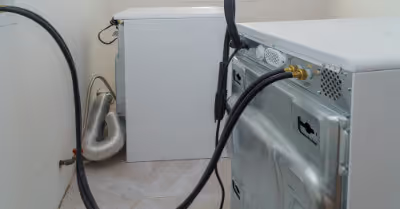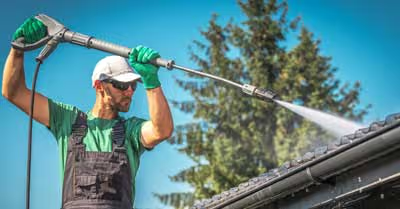Table of Contents
About USDA Loans
As noted above, USDA loans are home loans or mortgages guaranteed by the U.S Department of Agriculture. These loans are part of the Rural Development program created by the USDA.
These loans were originally designed to offer mortgages or home loans to rural property buyers with limited financing options.
But with the growing populations coupled with expanding suburbs, the USDA loans are no longer limited to rural property owners or farmers. They have evolved to become a viable mortgage option for those who want to enjoy country living.
So, if you cherish living in the countryside away from the noisy cities and towns, then homeownership is well within your reach, thanks to USDA home loans.
Types of USDA Loans
There are 3 types of home loans offered by the USDA. These are the Guaranteed USDA Loan, the Direct USDA Loan and the USDA Home Improvement Loans. Let's take a closer look at each of the loans.
USDA Guaranteed Loans
In this loan program, the USDA partners with local approved lenders to offer guaranteed loans. Similar to VA and FHA loan programs, the USDA guarantees up to 90 percent of the loan, thus cushioning the lender in case the borrower defaults.
And due to such high levels of guarantee, borrowers are able to obtain home loans at the lowest interest rates possible. Also, you can get a home loan without a perfect credit score or even with a 0% down payment.
You should note that you will be required to pay mortgage insurance premiums if you are not in a position to put a down payment.
Direct USDA Loans
These loans are also known as Section 502 Direct Loans. Through this program, the USDA will issue the loan directly to the borrower, as opposed to going through an intermediary lender.
Direct USDA loans are designed for the low to very-low-income earners, who are not in a position to access any other type of home loan.
If you qualify for this loan, you can use it to purchase, build, repair or renovate moderately-sized houses in qualifying rural areas.
Interest rates for Direct USDA Loans don't exceed 3.125%. In fact, they can drop to as low as 1% if the borrower has payment assistance. The home you intend to purchase using this program must meet the eligibility requirements.
USDA Home Improvement Loans
Issued under Section 504 of the Housing Act, these are home loans are designed to help low-income earners to renovate, enhance or modify their homes.
The borrower can access home improvement financing of up to $27,500, featuring a $20,000 loan and a grant of $7,500. The loan component has to be repaid over 20 years at a 1% interest rate.
Apart from the above 3 main home loans, the USDA also offers other lesser-known financing options such as Section 523 loans. Section 523 loans are used to buy and develop housing sites for moderate to low-income earners.
You can then use any of the above 3 home loans in combination with Section 523 home loans to purchase, build, or renovate a house, depending on your qualifications.
USDA Loan Eligibility Requirements
Similar to other loan programs, you must meet certain qualification requirements for you to be considered for USDA loans. At a minimum, you need to be a U.S citizen or a lawful permanent resident. Here is an overview of the other eligibility requirements:
Location
Properties financed via USDA loans must be within the eligible suburban or rural areas. The USDA has an eligibility map, which you can use to check whether the property you intend to purchase is within those areas
Income
USDA Loans are designed for families and individuals who demonstrate economic need. For example, your adjusted gross income shouldn't be more than 115% of the median area income.
So, if your income is at or below 115% of the median area income that you intend to purchase property, then you can be considered for USDA home loans.
Also, you will need to demonstrate you have a verifiable, reliable and stable income, which can comfortably make your mortgage payments without any issues, for at least 12 months.
Credit Score
There is a high chance that your lender will also check your credit score when you apply for USDA loans.
Most lenders will require you to have a credit score of at least 640, which is usually the minimum credit score that you need to qualify for USDA's automated underwriting and approval.
If your credit score is lower than 640, you can still qualify for USDA loans. However, your application will be subjected to manual overwriting, which normally involves stricter guidelines.
Qualifying for USDA home loans with a credit score of below 580 is still possible, but albeit challenging. For instance, you will need to show your lender that your score dipped significantly because of financial hardships.
In case you don't have a credit score at all, the lender may still evaluate your creditworthiness via other means, popularly known as non-traditional credit.
Your lender will check your record of paying various bills on time such as rent, insurance, medical bills, childcare, car lease, cell phone bills and personal loans, among others
Debt-to-Income Ratio
Your lender will use your DTI ratio to determine the amount of USDA loans that you can borrow. In simple terms, your debt-to-income ratio is the percentage of your income that goes to servicing debts every month.
If you have a high DTI ratio, then it means that a significant percent of your monthly income is servicing debts like car payments, housing payments and student loans, among debt obligations.
For USDA loans, your front-end ratio or housing ratio shouldn't be more than 29% while your back-end ratio or total debt ratio shouldn't exceed 41%.
While 41% is the minimum USDA guideline for DTI ratio, you can still qualify for USDA-backed loans if you have strong compensating factors like a strong job history or solid cash reserves.
USDA Loan Property Eligibility
While USDA loans come with looser credit guidelines and requirements compared to conventional loans, not all homes qualify. As discussed earlier, USDA loans are designed to boost rural development.
So, properties must meet various eligibility requirements for the borrower to get the loan. Here are the property eligibility requirements for USDA loans.
Must Be Within the USDA Loan Eligibility Map
Properties must fall within the USDA property eligibility map for them to be considered for the loans. The eligibility areas can change occasionally depending on population size or other qualifying factors.
Properties must Meet Specific Home Requirements
The property that you intend to purchase using USDA home loans must be safe, secure and structurally sound.
A USDA-approved inspector will visit the property to check whether it meets the minimum requirements such as:
-Structurally solid: The property you want to buy using USDA loans should be structurally solid for the entire duration of the mortgage.
-Operational cooling and heating: The USDA-approved inspector will also check the heating and cooling systems to determine whether they are operational.
-Adequate roof: The roofing structure should provide adequate minimum economic life. Also, it should not be leaking or allowing moisture into the house.
-Functional electric system: The property should have a functional, up-to-date and adequate electric system. Also, it shouldn't have exposed wiring or faulty sockets.
-Sufficient water flow and adequate plumbing: The target property should have ample water flow and a working plumbing system.
-Easy access: The property also needs to be easily accessible, preferably via an all-weather road or a paved surface.
Another requirement is that you cannot use USDA home loans to purchase income-producing properties. It should also serve as your primary residence, meaning it shouldn't be a vacation home or a second home. Also, only the loan beneficiary and their immediate family members can stay on the property.
USDA Loans Interest Rates
One of the main benefits of applying for USDA loans is the low interest compared to other 0% down loan options.
On average, most conventional home loans attract an interest rate of 4%. On the other hand, USDA home improvement loans and USDA Direct Loans come with an interest rate of 3.25%.
The interest rate for USDA loans can even go lower than 3.25%, based on the borrower's credit history, financial situation and the prevailing market conditions.
As for the USDA-guaranteed loans, the interest rate will vary from one lender to the other. So, you will need to shop around, compare the rates and then choose the most affordable lender.
USDA Loan Fees and Closing Costs
For guaranteed-USDA loans, you will be charged a 1% upfront fee and a 0.35% monthly mortgage insurance, paid for the entirety of the loan's duration.
Assuming that you get a $200,000 USDA loan, you will pay a $2,000 upfront fee. On top of that you will be paying $700 per month as a mortgage insurance fee.
Closing costs will depend on the loan type, the lender and various other factors. Some of the USDA loan-related closing costs that you may come across during the application process include an origination fee, underwriting fees, notary fees, credit report fees, title insurance, appraisal fee, and inspection fees.
USDA Loan Limit
So, what's the maximum USDA loan that you can borrow? Well, the limit will depend on the type of loan that you want.
For example, if you are applying for a USDA home improvement loan, then the maximum loan you can get is $20,000. Qualifying seniors can also get a $7,500 grant on top of the $20,000 loan.
If you are applying for direct USDA loans, then there are no maximum limits for the amount you can borrow. You can borrow as much as you want, depending on your ability to repay as well as whether you meet the USDA loan requirements.
For USDA guaranteed loans, the maximum loan you can get will depend on the lender's willingness to finance the property you intend to buy. However, the loan can exceed the property's appraised value.
USDA Loan Pros
-Zero down payment: You don't necessarily have to put a down payment when it comes to USDA loans. And this makes them a great option for people who can't afford conventional mortgages.
-Lower interest rates: USDA loans attract a lower interest rate compared to conventional or traditional mortgages, thus making them more affordable.
-Looser credit requirements: Borrowers with low credit scores or spotty credit scores can still get approved for USDA loans.
USDA Loan Cons
-Some properties are not eligible: Only properties that lie within the designated USDA-defined rural area can qualify for these loans.
-Income limits: Your income should not exceed 115% of the median area income that you want to buy the property.
-The property must be your primary residence: The property you intend to purchase using USDA loans must be your primary residence. So, you can't use USDA loans to buy vacation homes, second homes, or investment homes.
Getting USDA Loans
If you want to purchase, build, renovate or repair a home in rural or suburban areas and you can't qualify for conventional mortgages, then a USDA home loan may be the ideal choice for you.
The process of applying for the loan is almost similar to the underwriting process of conventional loans. However, you need to go a step further and check whether you are within the income eligibility bracket and the property is located in an eligible county or area.
After confirming that you meet the eligibility requirements, then you can go ahead, choose your preferred lender and complete the application process. The entire process should take approximately 2 to 3 weeks.
Recent Articles
















